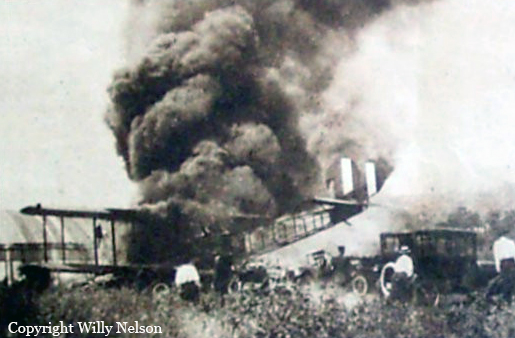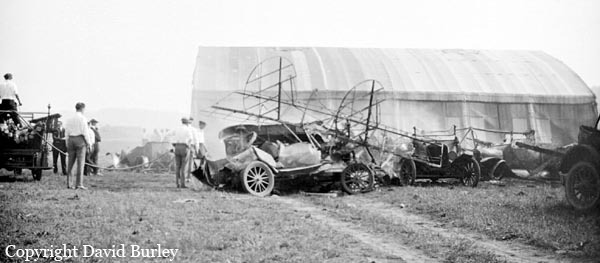Crash of a Martin NBS-1 in Moundsville: 5 killed
Date & Time:
Jul 10, 1921
Survivors:
Yes
Schedule:
Moundsville - Langley
Crew on board:
2
Crew fatalities:
Pax on board:
0
Pax fatalities:
Other fatalities:
Total fatalities:
5
Circumstances:
Shortly after takeoff, the crew encountered technical problems. The aircraft stalled and crashed on a parking lot near the airport. Upon impact, the aircraft caught fire and 16 cars were destroyed by fire. Five people on the ground were killed, among them three children. Twenty people were injured as well as both crew members. It appears that many people were contemplating the departure of the aircraft when the accident occurred.
Crew:
Lt C. R. McIvy, pilot,
T. H. Dunton, mechanic.
Crew:
Lt C. R. McIvy, pilot,
T. H. Dunton, mechanic.






